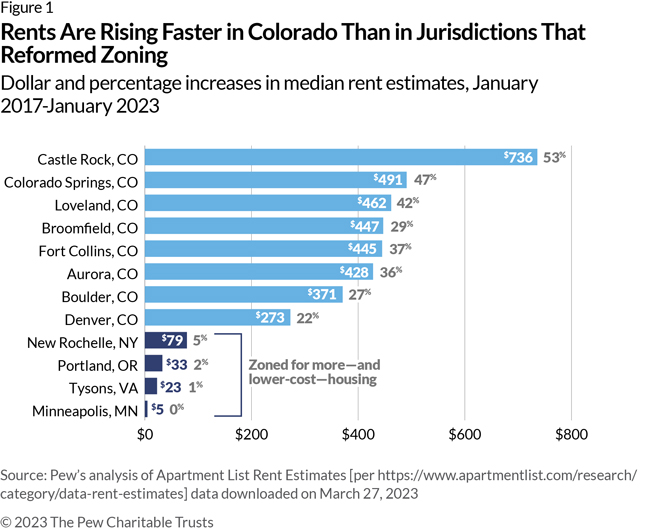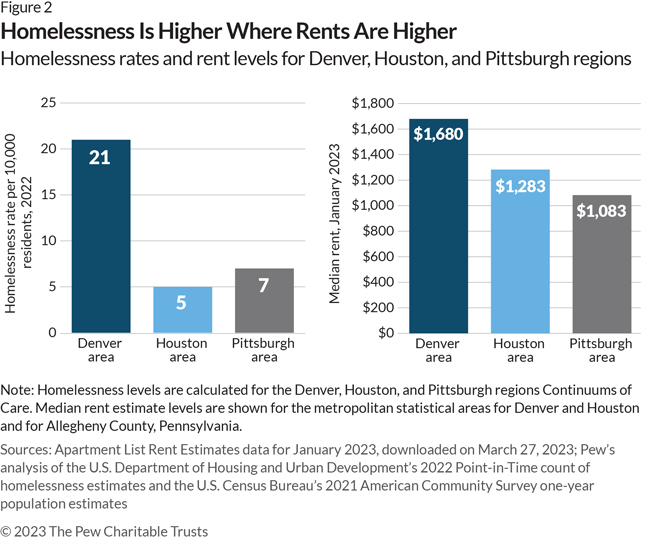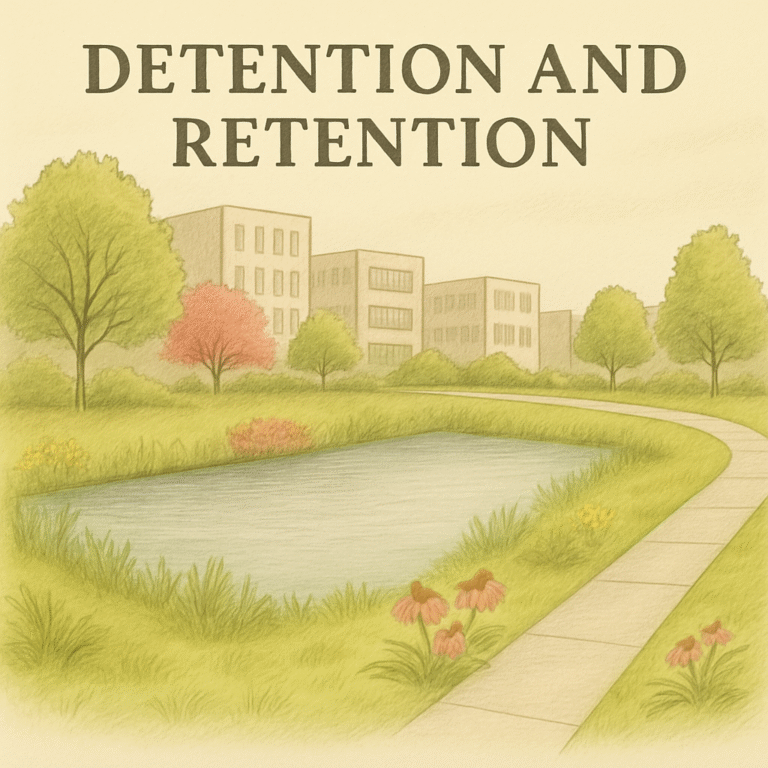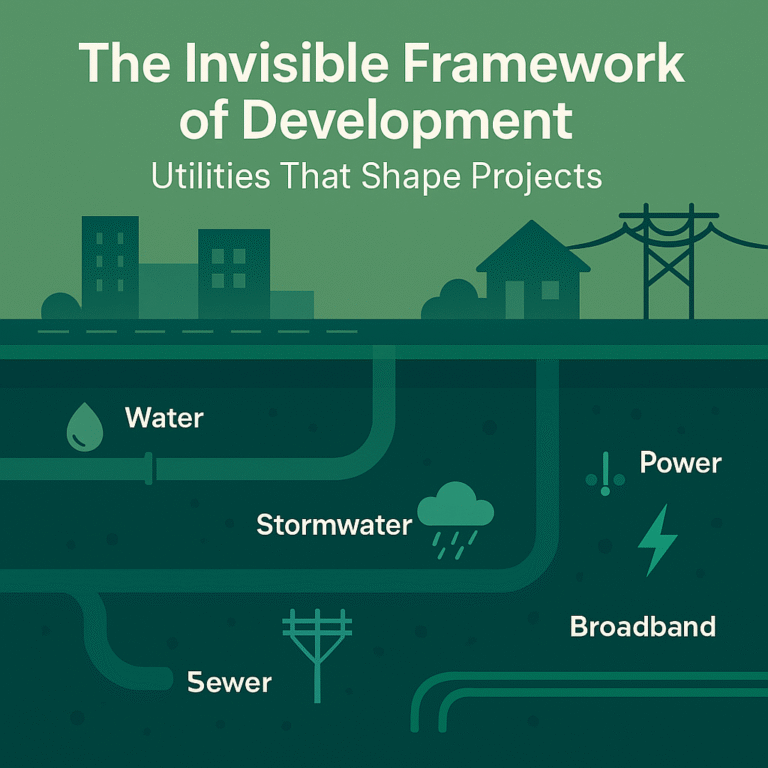Jurisdictions with updated regulations to allow more housing have held rents in check
Originally published on April 27, 2023 for Pew By: Alex Horowitz & Ryan Canavan
Like their counterparts in other states, policymakers in Colorado are reconsidering zoning policies in the midst of a national housing shortage that is driving rents up to all-time highs. In Colorado, rents increased 31% between January 2017 and January 2023. Some of the state’s cities and towns saw rents rise even faster during that time, including Castle Rock (53%), Colorado Springs (47%), Loveland (42%), and Fort Collins (37%). Continue below…

Why has rental housing in Colorado become so expensive? Numerous studies have found that rents rise quickly when there are too few homes available: Low vacancy rates lead to heavy competition for each opening. And for-sale markets reflect a similar dynamic when prices rise quickly in response to inventory shortages. Colorado faces both of these dilemmas: Rental vacancies across the state fell 10.1% between January 2017 and January 2023, while the monthly for-sale inventory in the state’s three largest regions declined 8% to 35% between January 2019 and January 2023.
Housing shortages lead to both fewer vacancies and fast-rising rents. Colorado’s population grew 14.8% between 2010 and 2020 but the state increased its housing stock by only 12.6%. There would be more than 43,000 additional homes statewide had the housing stock merely matched population growth during this period alone. In addition, Colorado’s average household size reached an all-time low of 2.46 people in 2021, with 64% of households containing only one or two people. More people in smaller households require more homes.
Strict land-use policies appear to be contributing to Colorado’s housing shortage. Across the state, many jurisdictions restrict large amounts of residential land only for the most expensive type of housing—single-unit detached housing, often with large lots and significant parking requirements. Other home types, such as small apartment buildings, duplexes, and townhomes, generally rent for less than single-unit detached homes, and research has found that reducing or removing parking mandates can reduce the costs to construct these more affordable homes. But local zoning codes have made it difficult or even impossible to build lower-cost housing types, limiting new construction and raising housing costs.
As rents have spiked in recent years, some jurisdictions have updated their zoning codes to address their housing shortages, slow rent growth, and enable more people to afford homeownership. Some examples that have received attention include Minneapolis, Minnesota; New Rochelle, New York; Portland, Oregon; and Tysons, Virginia. States, such as California, Massachusetts, Montana, Oregon, and Utah are also acting.
A recent Pew analysis found that zoning reforms have allowed the four cities mentioned above to add much more housing than the U.S. overall and contain rent growth. To better understand the impact of these zoning updates and added housing, Pew looked at how rents have changed in places that enacted reforms compared with those that have not. In Colorado cities and towns, rents have risen much faster over the past six years than in places that have also grown but that have allowed more housing. (See Figure 1.)

High housing costs burden household finances and drive higher rates of homelessness. The share of people without homes increased 8% from 2019 to 2022 in Colorado, as rents increased; the state now has the 13th-highest homelessness rate.
Comparing the Denver, Houston, and Pittsburgh areas—three regions that have taken different approaches to housing—helps to illustrate how housing costs drive homelessness. More flexible zoning policies in the Houston area have allowed the region to grant permits for an average of 86 new homes per 10,000 people annually from 2017-21, while the Denver area permitted only 77 per 10,000 people. As of January, Denver’s rents were 31% higher than Houston’s. Meanwhile, Houston cut homelessness in half from 2011-2020; the city put more than 25,000 residents into permanent housing during that time. In addition, Pittsburgh’s rents and homelessness levels have stayed relatively low because of the city’s available housing stock from when it had a larger population. The Denver area’s 2022 homelessness rate of 21 unhoused people per 10,000 residents is four times higher than the Houston area’s rate and three times higher than the Pittsburgh area’s. (See Figure 2.)

The jurisdictions that have kept both housing costs and homelessness levels low tend to be those that have enough housing, especially lower-cost forms of housing. One type of home that tends to be affordable even without subsidies is the accessory dwelling unit (ADU). These are small homes on the same lot as a single-family home, usually a basement apartment, converted garage, carriage house above a garage, or backyard studio. Research has found these units are often affordable even without subsidies to residents earning 80% of the area median income or less. However, local zoning codes commonly make it difficult to obtain permits to build ADUs or convert basements or garages into units.
To highlight relevant research for those interested in housing affordability in Colorado and other states, Pew earlier compiled the data discussed here for a presentation on April 6, 2023, to the Colorado Senate Local Government and Housing Committee. Though not every city, town, or state takes the same approach to zoning, the relationships among supply, demand, and prices in housing markets are strong and consistent. Restrictive zoning in high-demand places is associated with high housing costs.
At the same time, jurisdictions that have begun allowing more housing have succeeded in sharply slowing the growth of rents. This is especially true for lower-cost forms of housing, such as apartments, accessory dwelling units, and homes on small lots or without required parking. At a time when families are spending a greater share of income on rent than ever before, the experiences of jurisdictions that have reformed their zoning to allow more and lower-cost homes hold clear lessons for improving housing affordability.
Alex Horowitz is a director and Ryan Canavan is a senior associate with The Pew Charitable Trusts’ housing policy initiative.




